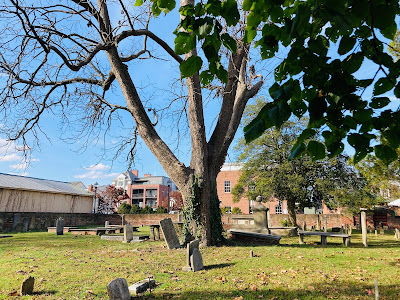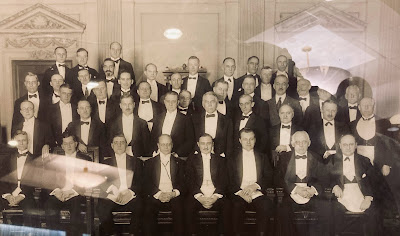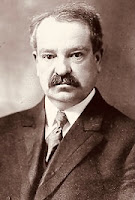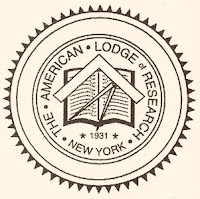Things started Friday, November 4, the 270th anniversary of the initiation into Freemasonry of George Washington in The Lodge at Fredericksburg. The lodge then met inside John Jones’ tavern, located around the corner from the current Fredericksburg Lodge 4. The brethren are at home in a charming brick structure dating to 1816. As one would expect, the lodge building could serve as a destination Masonic museum, its walls and square footage displaying all kinds of story-telling treasures, from framed aprons and portraits to furniture and many mementos.
 |
Presented to Fredericksburg 4 by George Washington 285 in NYC on November 4, 1920. |
One very notable connection to New Jersey is the lodge’s reverence for Bro. Hugh Mercer, a native of Scotland who served under Washington as a general in the Revolutionary War. He died from wounds suffered during the Battle of Princeton, and the County of Mercer and Mercer Lodge 5 are among his namesakes. He was a Mason of The Lodge at Fredericksburg, and not far from the lodge stands the General Hugh Mercer Monument, a larger-than-life bronze atop a massive stone plinth, erected by the federal government in 1906, memorializing him. We sojourning Masons walked in a procession to this statue where W. Bro. Shelby Chandler, now the lodge Tiler (Virginia spelling), presented a detailed biography of the hero to whom our nation owes so much.
 |
| ‘You Masons are all goin’ to hell!’ hollered one woman driving past us, prompting much laughter. |
En route to the statue, we stopped at the oldest Masonic cemetery in the Western Hemisphere. Established by the lodge in 1784, it is the final resting place of approximately 270 Masons and their families. It is very much part of Fredericksburg Lodge’s life, and although many of the headstones show their age through worn, illegible inscriptions and broken pieces, the cemetery is not a neglected graveyard, and the grounds are maintained by the brethren themselves.
 |
| Presidents Washington and Monroe in miniature portraits. |
Back at the lodge, our large party was seated for a sumptuous feast to restore our strength before a special communication of the lodge.
 |
| A word about lapel pins: We guests were presented with two by our hosts at Fredericksburg Lodge. Big ones. On the left is the lodge’s 270th anniversary (1752-2022) pin. The design is half the Scottish flag on the left with half the Fredericksburg flag on the right. The pin at right is—well, I guess I know what I’ll be wearing on Washington’s birthday! It unquestionably is the largest lapel pin I’ve ever owned; in length and width it exceeds a U.S. dollar coin. Not the lame Sacagawea coin, but, like a Morgan silver dollar! It’s hard to get a good photo of them. |
It was the Official Visit of Most Worshipful James Winfield Golladay, Jr., Grand Master of the Grand Lodge of Virginia. As such, it was a long meeting thanks to numerous introductions and greetings of many individuals and groups of eminent Masons. When the Left-Handed Past Grand Pursuivants were asked to present themselves west of the altar, I attempted to sneak out the Outer Door. Alas, the lodge was closely tiled (New York spelling).
 |
| Printed in 1668 in Cambridge, this KJV is the Bible in use when Washington took his obligations. |
In case you were wondering, yes, the King James Bible on which Washington placed his hands for his Masonic obligations was present. Printed in 1668 in Cambridge, England, it is safeguarded by the lodge and is displayed, open to Ecclesiastes 12, inside a translucent case. No flash photography is permitted; fortunately our smart phones feature cameras that can capture images almost regardless of lighting conditions.
All of that would have sufficed for a full Masonic weekend, but the conference that drew us to Virginia began the following morning. More on that to come in an upcoming edition of The Magpie Mason.



































































































